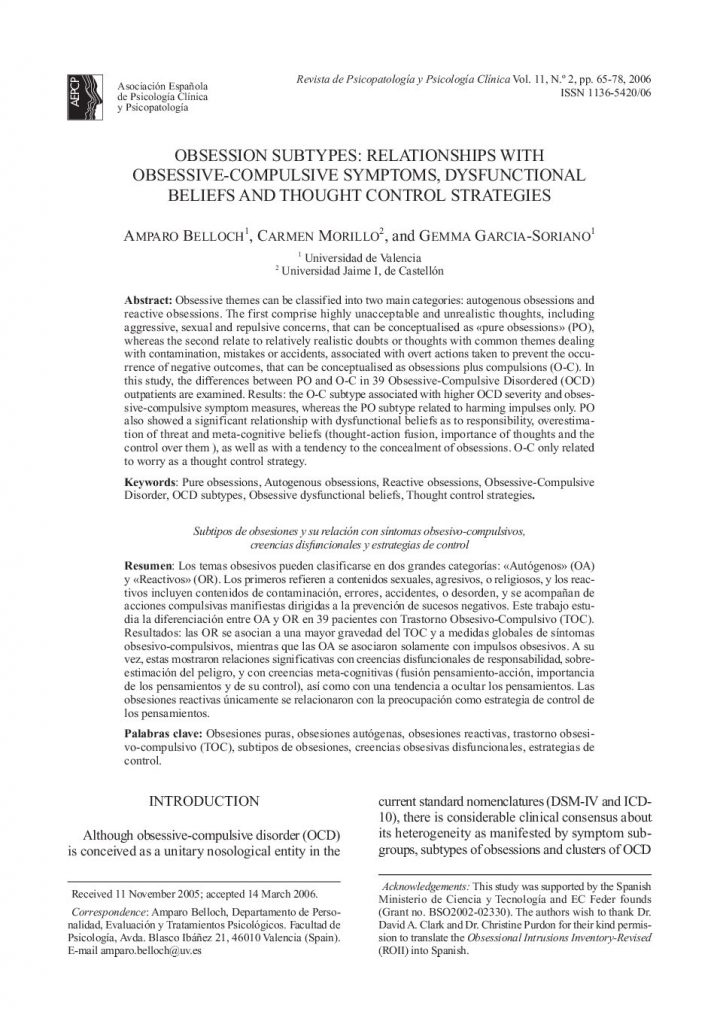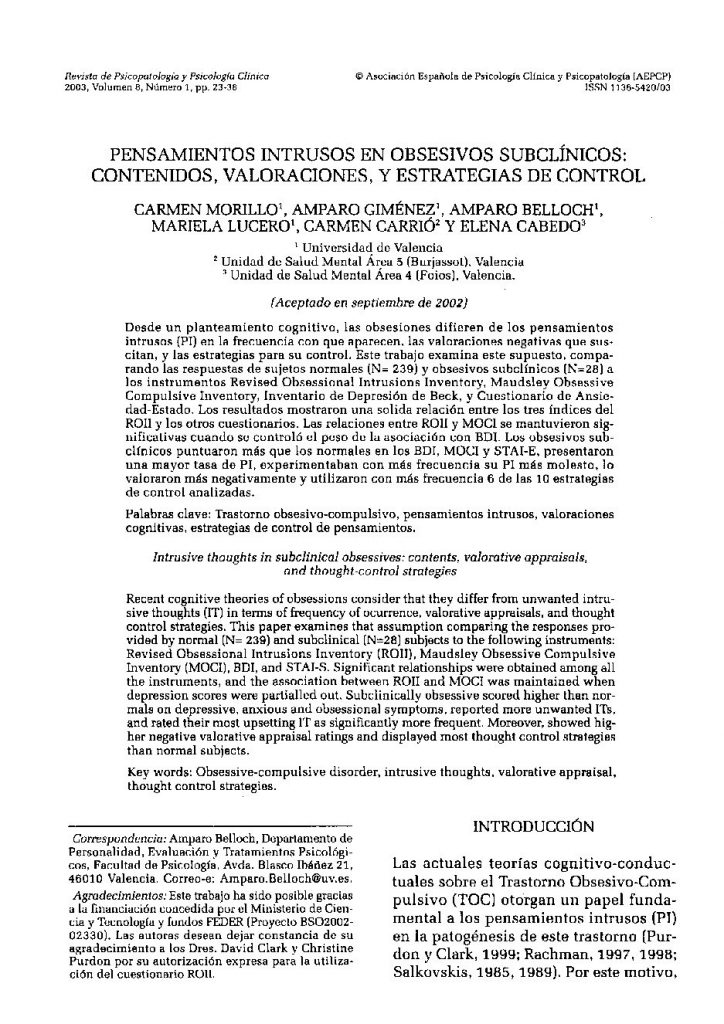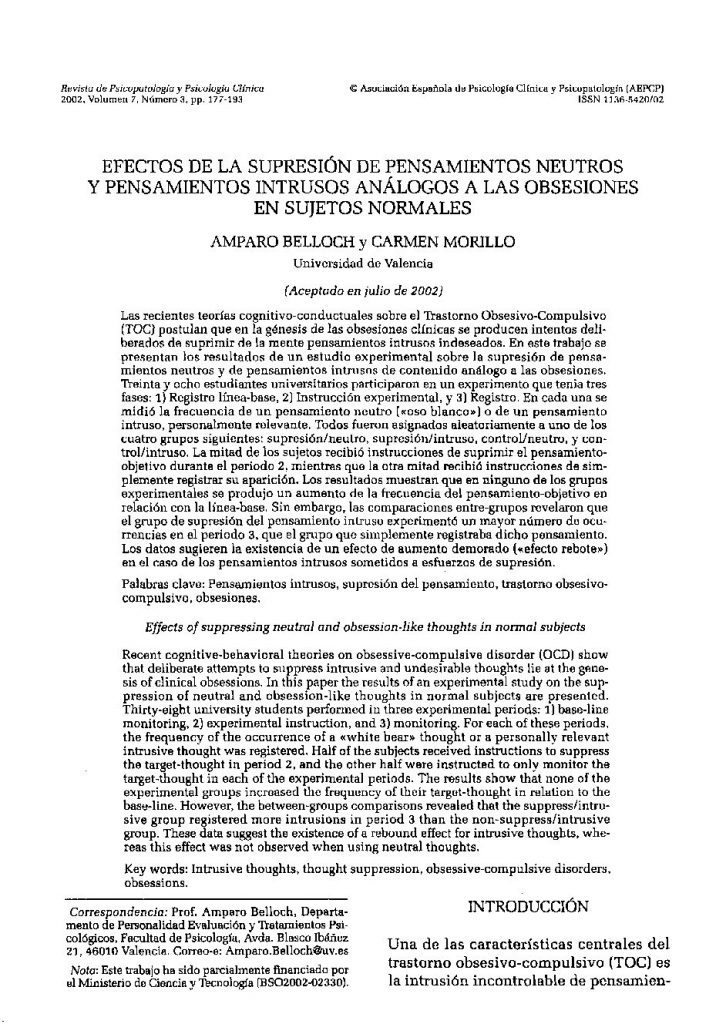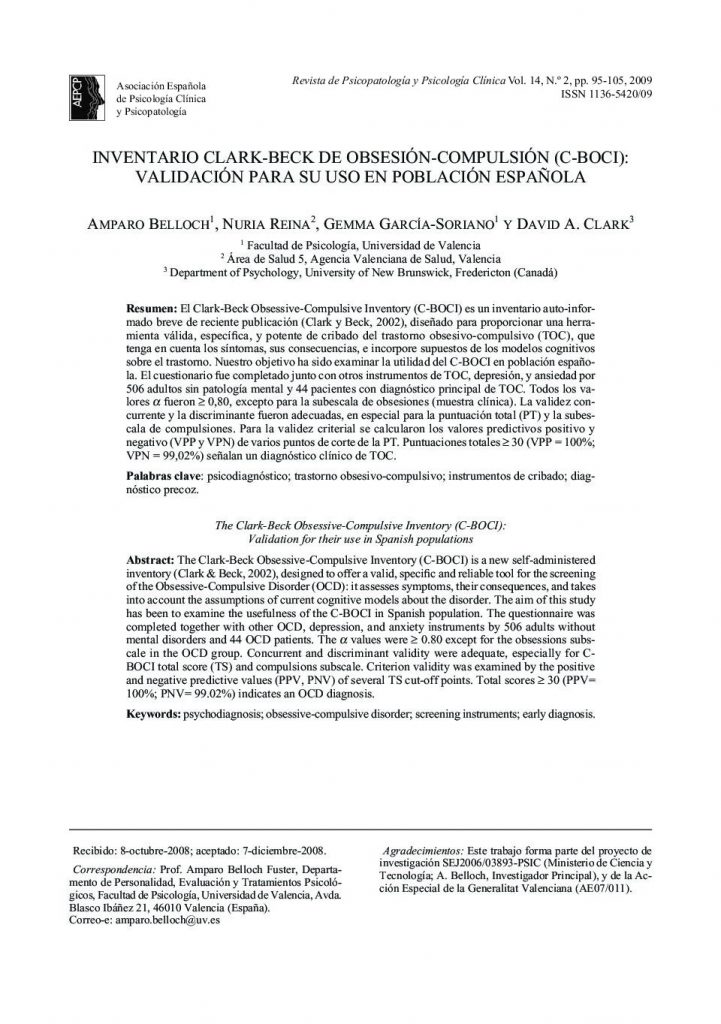Sobre la heterogeneidad del trastorno obsesivo-compulsivo: una revisión.
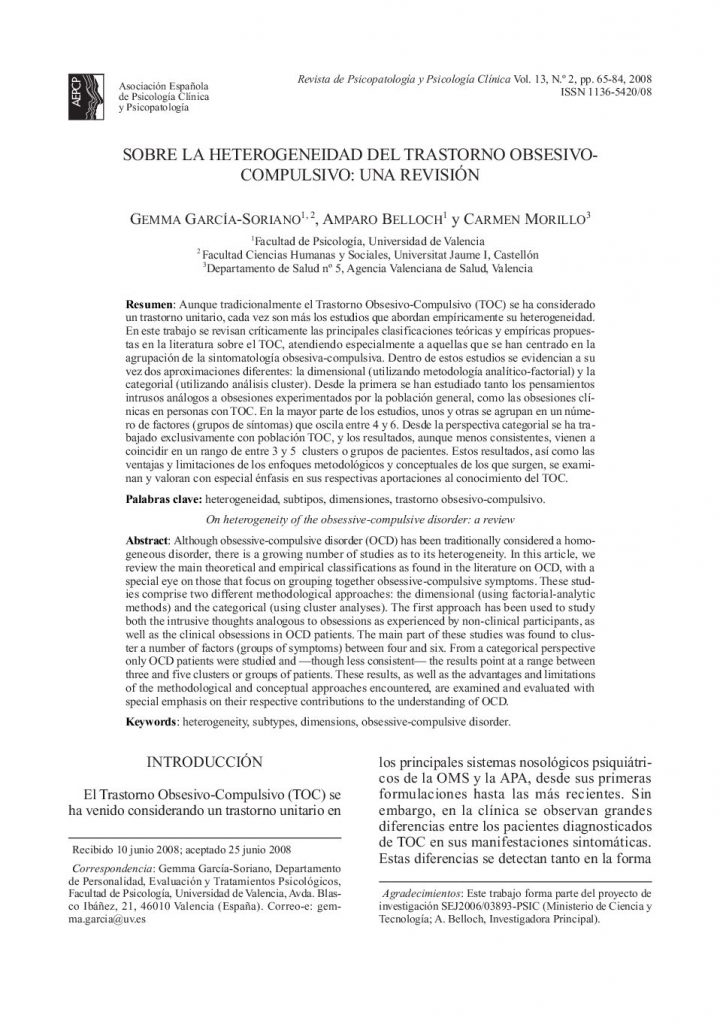
- Sobre la heterogeneidad del trastorno obsesivo-compulsivo: una revisión.
- Calidad de vida relacionada con la salud en adultos diagnosticados con epilepsia.
- Estado psicológico de los adolescentes con enfermedades reumáticas: Una primera aproximación.
- Adaptación al castellano de un instrumento para evaluar el estilo rumiativo: la escala de respuestas rumiativas.
- Trastornos del estado de ánimo al final de la vida: ¿desmoralización o depresión?.
Although obsessive-compulsive disorder (OCD) has been traditionally considered a homogeneous disorder, there is a growing number of studies as to its heterogeneity. In this article, we review the main theoretical and empirical classifications as found in the literature on OCD, with a special eye on those that focus on grouping together obsessive-compulsive symptoms. These studies comprise two different methodological approaches: the dimensional (using factorial-analytic methods) and the cate-gorical (using cluster analyses). The first approach has been used to study both the intrusive thoughts analogous to obsessions as experienced by non-clinical participants, as well as the clinical obsessions in OCD patients. The main part of these studies was found to cluster a number of factors (groups of symptoms) between four and six. From a categorical perspective only OCD patients were studied and - though less consistent - the results point at a range between three and five clusters or groups of patients. These results, as well as the advantages and limitations of the methodological and concep-tual approaches encountered, are examined and evaluated with special emphasis on their respective contributions to the understanding of OCD.
Aunque tradicionalmente el Trastorno Obsesivo-Compulsivo (TOC) se ha considerado un trastorno unitario, cada vez son más los estudios que abordan empíricamente su heterogeneidad. En este tra-bajo se revisan críticamente las principales clasificaciones teóricas y empíricas propuestas en la lite-ratura sobre el TOC, atendiendo especialmente a aquellas que se han centrado en la agrupación de la sintomatología obsesiva-compulsiva. Dentro de estos estudios se evidencian a su vez dos aproxi-maciones diferentes: la dimensional (utilizando metodología analítico-factorial) y la categorial (utili-zando análisis cluster). Desde la primera se han estudiado tanto los pensamientos intrusos análogos a obsesiones experimentados por la población general, como las obsesiones clínicas en personas con TOC. En la mayor parte de los estudios, unos y otras se agrupan en un número de factores (gru-pos de síntomas) que oscila entre 4 y 6. Desde la perspectiva categorial se ha trabajado exclusiva-mente con población TOC, y los resultados, aunque menos consistentes, vienen a coincidir en un rango de entre 3 y 5 clusters o grupos de pacientes. Estos resultados, así como las ventajas y limita-ciones de los enfoques metodológicos y conceptuales de los que surgen, se examinan y valoran con especial énfasis en sus respectivas aportaciones al conocimiento del TOC.



